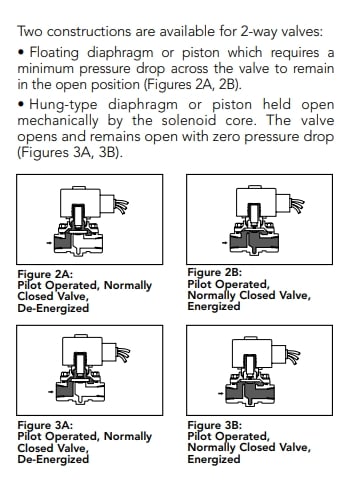Rodger Furey
Mechanical
Many (most? all?) pilot operated solenoid valves require a 5 psi pressure differential to open.
An example of the type of solenoid valve I am referring to is here ...
The question(s) I've submitted to two manufacturers (ASCO, Plastomatic) is - what happens after the valve is open? Does the valve need to maintain the 5 psi diff in order to remain open and close properly?
Surprisingly, I have not received a definitive answer from either. ASCO tech support suggests that their valves might not close properly, Plastomatic just doesn't know.
The Cv of the valve will determine how much flow is required to create a 5 psi differential across the valve.
What happens to the valve when the actual flow is below that value, resulting in a greatly reduced pressure diff? ... like, 0.1 psi.
Does anyone work with pilot operated solenoid valves like this, and how do you deal with this situation?
Thx!
An example of the type of solenoid valve I am referring to is here ...
The question(s) I've submitted to two manufacturers (ASCO, Plastomatic) is - what happens after the valve is open? Does the valve need to maintain the 5 psi diff in order to remain open and close properly?
Surprisingly, I have not received a definitive answer from either. ASCO tech support suggests that their valves might not close properly, Plastomatic just doesn't know.
The Cv of the valve will determine how much flow is required to create a 5 psi differential across the valve.
What happens to the valve when the actual flow is below that value, resulting in a greatly reduced pressure diff? ... like, 0.1 psi.
Does anyone work with pilot operated solenoid valves like this, and how do you deal with this situation?
Thx!

